Shrimp Culture of Penaeus vannamei: successfully starting from Seedling
In July 2016, aquaculture Diantong came to Haimao Shrimp Seedling Company in Zhanjiang, Guangdong Province for an one-month study exchange. During this period, the author studied the development of shrimp seedlings, water treatment system, water quality observation and testing, identification of shrimp seedlings, as well as release, daily management, emergence and pond cleaning. It is considered that in order to raise shrimp successfully, it is necessary to start with seedlings.
1. The stage of shrimp seedling development.
The growth and development stage of Penaeus vannamei seedlings mainly includes five stages: fertilized egg, nauplius, flea larva, Mysis larva and larva, and each stage is subdivided according to different morphology. for example, flea larvae can be subdivided into Ⅰ stage, Ⅱ stage and Ⅲ stage, and larval stage can be subdivided into P1~P20 and other stages. Through the introduction of Director Liang of Haimao Shrimp Seedling Company, the metamorphosis of Penaeus vannamei seedlings at each stage of growth and development has certain rules and characteristics, in which nauplius mainly through the observation of caudal fin, flea larvae through observation of eye points and tail appendages, Mysis prawns through observation of swimming feet, larvae through the observation of Gill development, but the determination of each stage of growth and development needs to rely on production experience and microscope further observation.
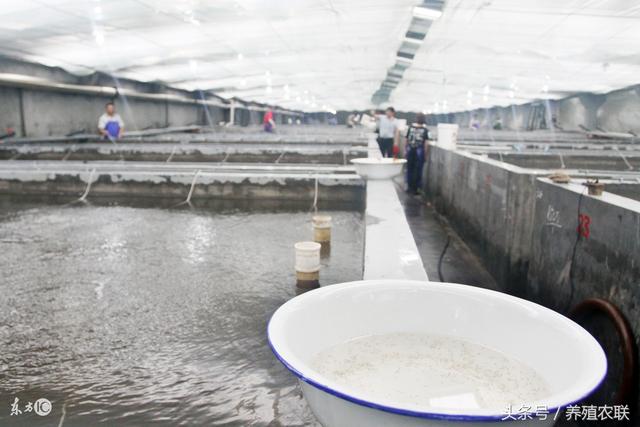
Shrimp fry
2. Water treatment system
The treatment process of the water treatment system includes: sand filtration seawater-sedimentation tank-Datang chlorine disinfection-fine sand filtration-protein separation-dark tank-precision filter-ultraviolet disinfection-activated carbon adsorption-high density fiber filtration-workshop. The sea water treated by this complex water treatment system is clean and clear, and there are no aquatic organisms and organic matter in the water body, which provides a reliable water body for later seedling breeding.
Shrimp culture: a simple shed model, the profit rate of Penaeus vannamei culture is 90%, and the profit per mu is more than 20,000.
3. Observation and detection of water quality
The observation and detection of water quality mainly includes the improvement of water, dissolved oxygen, physical and chemical indexes and bottom quality, in which the standard of water is "fertilizer, live, tender and cool". Under this condition, the water body is refreshing and vibrant, and the abundance of bait is good, so it is the best condition for culture water. The change of dissolved oxygen is mainly affected by the photosynthesis of algae and the respiration of some aquatic organisms and microorganisms. The physical and chemical indexes mainly include ammonia nitrogen, nitrite, PH value and total alkalinity, and corresponding measures should be taken for the changes of different indexes, and the improvement of sediment is very important to maintain the long-term relative stability of water body. for the improvement of sediment, we can use biological bottom change, chemical bottom change, cool bottom change and physical bottom change (it can only take effect in a short time, but not fundamentally).
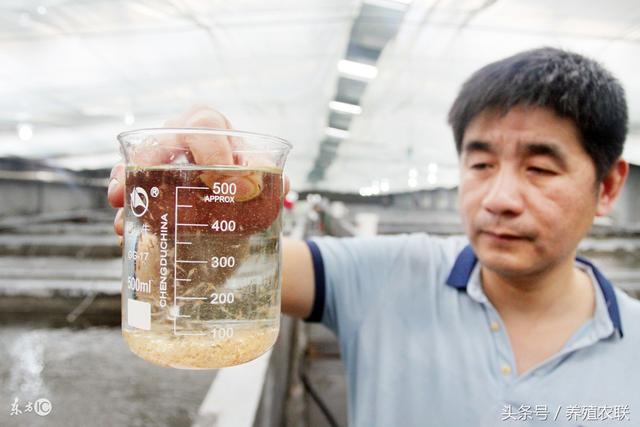
Shrimp fry 4. Distinguish the advantages and disadvantages of shrimp fry
High-quality shrimp seedlings should have no body damage, smooth body surface, clear outline of hepatopancreas, strong phototaxis, strong anti-stress ability, strong reverse current ability, neat specifications, continuous long-distance swimming, strong bouncing, no red or light cyan body color, full gastrointestinal tract (first line black) and so on. However, inferior shrimp seedlings often show weak anti-stress ability, poor ability to swim against the current, weak adaptability to water temperature and salt concentration, weak vitality and slow response; incomplete shrimp seedlings, scratched body surface or crippled appendages; abnormal body color, white and turbid muscles, red or blue at the base of appendages; Gill filaments hanging viscera, body surface with parasites, algae and feces; hepatopancreas atrophy, jejunum and other adverse symptoms.
Shrimp culture: the benefit of mixed culture of Macrobrachium rosenbergii and Penaeus vannamei is good. 5. Preparatory work
The nursery pond should be cleaned and disinfected one week before releasing seedlings in the workshop. First, disinfect and clean the cleaning tools and shed cloth, then sprinkle the seedling pond with methanol or potassium permanganate (disinfection for more than 12 hours), and then sprinkle around the seedling pond and the aisle with methanol or potassium permanganate. Finally, rinse the seedling pond with fresh water, clean it with washing powder, open the ceiling and expose it to the sun. In addition, seawater and fresh water should be injected into the seedling pond before seedling release, and the water temperature (32 ℃) and salinity (not less than 16 ‰, the most suitable salinity should be 22 ‰) should be adjusted. Then, nutrients should be added to the water body to cultivate microorganisms in the water body, and the seedlings can be released for about a week. 6. Release seedlings
The release standard of Primo White Shrimp in Haimao Shrimp Seedling Company is to use nauplius and put the nauplii larvae into each nursery workshop and put 5 million ~ 6 million (30 cubic meters) into each nursery pond. Through the practice and observation of the seedling release in the seedling workshop of Haimao Shrimp Seedling Company, it is found that the seedling release mode is mainly put in directly and after disinfection, and the different release mode is mainly based on the choice of technical masters in each district. Through the communication with the technical master, we have a more comprehensive understanding of these two ways of releasing seedlings. Because the nauplius has been transported for a long time, the shrimp seedlings themselves are more fragile at this time, and the direct release can reduce the further damage to the shrimp seedlings. However, it may bring in related bacteria and viruses, while disinfection avoids the entry of bacteria and viruses, but has some harm to the shrimp.
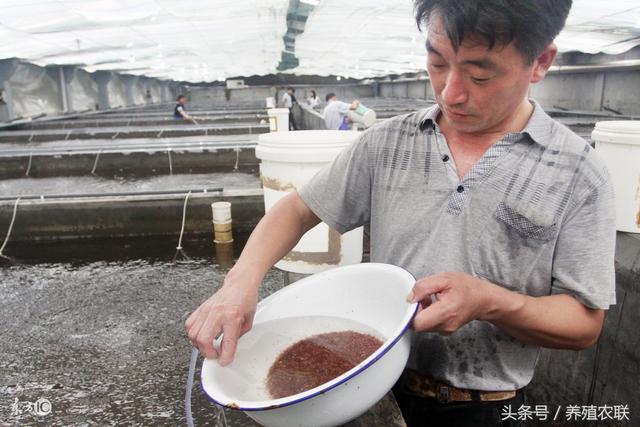
Shrimp seedlings 7. Daily management
The daily management of the workshop after seedling release is mainly based on the grasp of the physical and chemical indexes of the water body, the change of water and feeding in the seedling pond, in addition, the temperature of the water body in the seedling pond, the vitality of shrimp seedlings, whether there are dead seedlings, inflation, bait and so on should be observed every day. The physical and chemical indexes of the water body are mainly detected by the laboratory, and the water quality of the culture workshop should be tested every day after releasing seedlings. Through the understanding of the detection indexes (mainly Vibrio composition, pH value, ammonia nitrogen and nitrite, etc.), the water quality of the breeding pond and the condition of shrimp seedlings can be judged. The water in the nursery pond is usually changed to another workshop every other day, and the water level of 20 cm in the nursery pond is generally drawn out. When pumping water, a screen screen (the mesh of the screen is determined by the size of the shrimp seedlings) is used to filter and observe to see if there is any seedling leakage. Then add 20 cm (10 cm seawater, 10 cm fresh water) water to the nursery pond, but some special cases should be treated specially. The specific process and operation are mainly arranged by the technical masters in each district. The feeding mainly included plant food and animal food, in which the larvae of Mysis prawns were mainly plant food and chilled harvest insects, and in the later stage, they were mainly animal feed shrimp skin and harvest worms, and the feeding interval was 4 hours. the contents of ammonia nitrogen and nitrite in the nursery pond began to increase, but the effect of shrimp seedlings was not great. In addition, the color of the water changed from yellowish green to tea brown.
Shrimp culture: integrated disease control techniques of Penaeus vannamei 8, emergence and pond cleaning
The standard of emergence is mainly in the P5 stage of larval shrimp, and the whole breeding process is about 13-15 days. The water in the nursery pond should be discharged before emergence (at this time, attention should be paid not to directly pull out the intubation in the pond, because there is a great difference in the water level inside and outside the pond, it will have a great impact on the shrimp seedlings and cause the shrimp seedlings to die). When the water level in the nursery pond is discharged to 40 cm ~ 50 cm, the intubation can be pulled out to make the shrimp seedlings enter the seedling collection net, and then use the screen net to pick up the seedlings. In addition, when taking the seedlings, we should also pay attention to the amount of seedlings taken each time. When there are too many shrimp seedlings, it may cause hypoxia and death. After drainage, the shrimp seedlings are loaded into a double-layer plastic bag containing 20 liters of cold water and washed into a double-layer plastic bag with oxygen, and finally put into a foam box with an ice bottle, which is packed and loaded respectively according to the way of air transportation or automobile transportation. the transport vehicle has the cooling function, and the temperature in the car on the way should be paid attention to (about 20 ℃). After emergence, the residue of the emergence pool bottom and four walls is washed with fresh water, and then the bottom, four walls, inflatable pipe, heating pipe and gas stone are washed with detergent.
Friends who are interested in aquaculture can follow the official account: aquaculture one by one, and there are wonderful breeding information and technical articles to share every day. Email address: [email protected].
- Prev
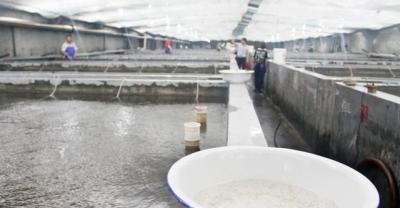
How do breeding friends judge chicken infectious synovitis?
How about the prevention of chicken infectious synovitis? 2017-12-14 Avian doctor Little Prince Chicken Infectious synovitis, also known as synovial cyst mycoplasma, is infected by Mycoplasma synovium.
- Next
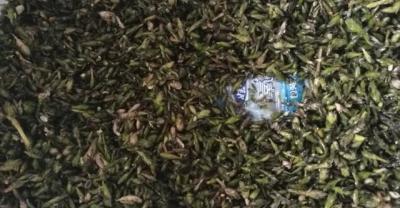
How to identify wild honey and its culture process
We have beekeeping for 30 years. Our hometown Taian Ningyang Geshi has a jujube garden base of ten thousand mu. The jujube nectar collected has not been processed or added.
Related
- On the eggshell is a badge full of pride. British Poultry Egg Market and Consumer observation
- British study: 72% of Britons are willing to buy native eggs raised by insects
- Guidelines for friendly egg production revised the increase of space in chicken sheds can not be forced to change feathers and lay eggs.
- Risk of delay in customs clearance Australia suspends lobster exports to China
- Pig semen-the Vector of virus Transmission (4)
- Pig semen-the Vector of virus Transmission (3)
- Five common causes of difficult control of classical swine fever in clinic and their countermeasures
- Foot-and-mouth disease is the most effective way to prevent it!
- PED is the number one killer of piglets and has to be guarded against in autumn and winter.
- What is "yellow fat pig"? Have you ever heard the pig collector talk about "yellow fat pig"?

